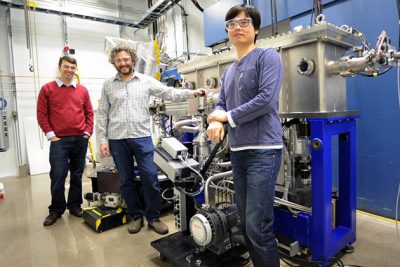John Mangeri’s Award Lands Him in Argonne National Laboratory
John Mangeri (left) with his SCGSR-award host Dr. Olle Heinonen (right) in front of the Chemistry building (bldg. 200) at Argonne National Laboratory.
(Photo credit to Dr. Andrea Jokisaari)
By Katherine Eastman
John Mangeri, a Ph.D. candidate in Dr. Serge Nakhmanson’s “Complex Materials by Computational Design” group, was selected to receive the U.S. Department of Energy’s Office of Science Graduate Research (DoE SCGSR) award for his project, Computational Design of Functional Materials for Electrothermal Energy Interconversion on Mesoscale.
This award allowed John to conduct research on his project at the Argonne National Laboratory in Lemont, IL, for from June to September in 2016 under the guidance of the DoE collaborator, Dr. Olle G. Heinonen.
The U.S. Department of Energy states that the “SCGSR program provides supplemental awards to outstanding U.S. graduate students to pursue part of their graduate thesis research at a DoE laboratory in areas that address specific challenges central to the Office of Science mission.”
Argonne National Laboratory is one of the U.S. Department of Energy’s premier national laboratories for scientific and engineering research. Its state-of-the-art, high-performance computing facilities that were available to John during his visit enabled him to achieve rapid progress in advancing his Ph.D. project.
“I am extremely pleased with John’s research accomplishments on the way to his Ph.D. degree. John is currently the main code developer for the mesoscale-level multiphysics simulation package, ‘Ferret,’ that is being utilized by the group together with our Argonne collaborators to design new materials that can convert thermal energy into electrical and vice versa,” Dr. Nakhmanson commented.
John’s research on a new material concept for this energy conversion by utilizing an electrocaloric effect that changes the temperature of a dielectric when subjected to an external electric field was recently published in a new journal, NPJ Computational Materials, that is partnered with the prestigious scientific journal Nature. The article, entitled “Amplitudon and phason modes of electrocaloric energy interconversion,” was co-authored by John, Krishna Pitike (also a graduate student in Dr. Nakhmanson’s group), Dr. Pamir Alpay, and Dr. Nakhmanson.
In that project, the co-authors conducted a theoretical investigation of a model system made up of thin perovskite-oxide crystal layers, whose polarization directions can be easily reoriented by an applied electric field.
This unusual system, the team demonstrated, must exhibit two different kinds of electrocaloric responses, conventional and anomalous one, that can either heat the material up or cool it down with a capability to switch between these two modes on demand. Possible applications for this effect are new, integrated cooling sources for computer chips and other electronic circuits, as well as more efficient and silent HVAC devices.
“The effect we saw was quite unexpected. We were able to show that there are two kinds of energy conversion modes in that material — stemming, respectively, from either amplitudon or phason excitations of the local polar dipoles,” John said.
Even though this material does not yet exist, he further explained, quantum mechanics suggests that it could be put together by one of atomic layer-by-layer deposition techniques that are utilized for growing thin oxide films on substrates.
“It’s a good opportunity for me,” John said in reflection of his SCGSR-sponsored research experience at Argonne. “There’s always more work to do — you always have to be looking at the next step in developing your career and being exposed to a different setting for doing science really helps with evaluating your priorities.”
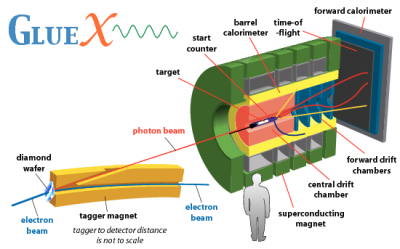 Scientists are one step closer to understanding the strong force that binds quarks together forever. Researchers working with the Continuous Electron Beam Accelerator Facility (CEBAF) at the U.S. Department of Energy’s Jefferson National Accelerator Facility (J-Lab) have published their first scientific results since the accelerator energy was increased from six billion electron volts (GeV) to 12 GeV. The upgrade was commissioned to enable the next generation of physics experiments that will allow scientists to see smaller bits of matter than have ever been seen before. The first publication from the upgraded CEBAF was published by the Gluonic Excitation Project (GlueX) in the April issue of Physical Review C, available
Scientists are one step closer to understanding the strong force that binds quarks together forever. Researchers working with the Continuous Electron Beam Accelerator Facility (CEBAF) at the U.S. Department of Energy’s Jefferson National Accelerator Facility (J-Lab) have published their first scientific results since the accelerator energy was increased from six billion electron volts (GeV) to 12 GeV. The upgrade was commissioned to enable the next generation of physics experiments that will allow scientists to see smaller bits of matter than have ever been seen before. The first publication from the upgraded CEBAF was published by the Gluonic Excitation Project (GlueX) in the April issue of Physical Review C, available 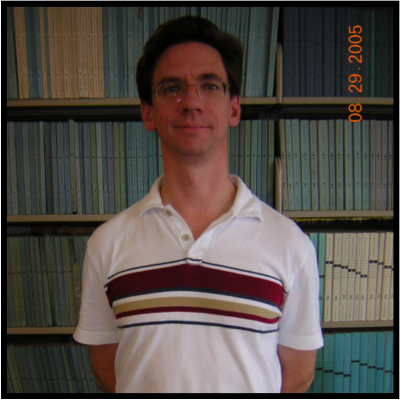
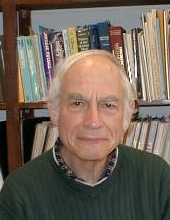
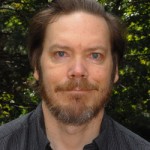
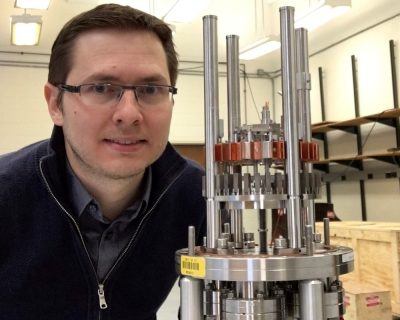 Dr. Sochnikov is a recipient of Montana Instruments Cold Science Exploration Awards Lab Startup Grant.
Dr. Sochnikov is a recipient of Montana Instruments Cold Science Exploration Awards Lab Startup Grant.
